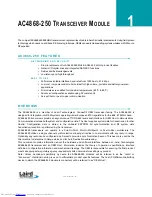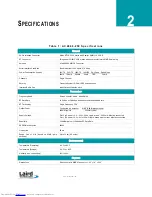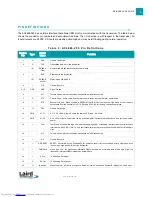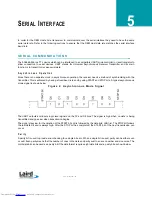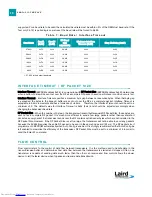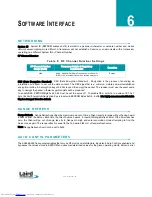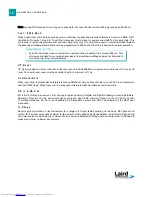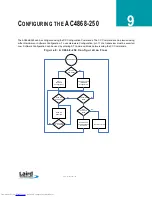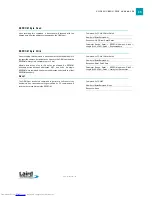
S E R I A L I N T E R F A C E
1 2
should be a strong consideration when designing the system.
S Y S T E M T H R O U G H P U T
When operating as shown below, an AC4868-250 transceiver is capable of achieving the listed throughput. However,
in the presence of interference or at longer ranges, the transceiver may be unable to meet the specified throughput.
E N G I N E E R ’ S T I P
In High-density applications, what amount of latency should be expected?
It is not easy to predict the exact amount of latency in high-density applications. There are
many variables that affect system latency. The three variables that most affect the latency are
the network load, the distance between transceivers, and whether the transceivers are
operating in a broadcast or addressed mode. There is no fixed answer as to how much latency
will be introduced in the system when considering high-density applications. In these cases we
can just offer qualitative analysis of the latency in high-density applications. As the network
load increases, then the number of collisions that will occur increases. As the number of
collisions increase, then the system latency increases. As the distance between the
transceivers increases, so to does the system latency. Finally, when transceivers operate in
addressed mode they will retry sending a packet up to the number of time specified in the
transmit retry parameter specified in the EEPROM. As the number of retries increases, the
system latency will increase also.
T a b l e 8 : M a x i m u m S y s t e m T h r o u g h p u t
RF Mode
RF Baud
(determined by
Interface Baud)
Half Duplex Throughput
(bps)
Full Duplex Throughput
(bps) each way
Addressed
28,800
15k
7.5k
Addressed
19,200
6.8k
3.4k
Broadcast
28,800
18k
9k
Broadcast
19,200
12k
6k
electronic components distributor




